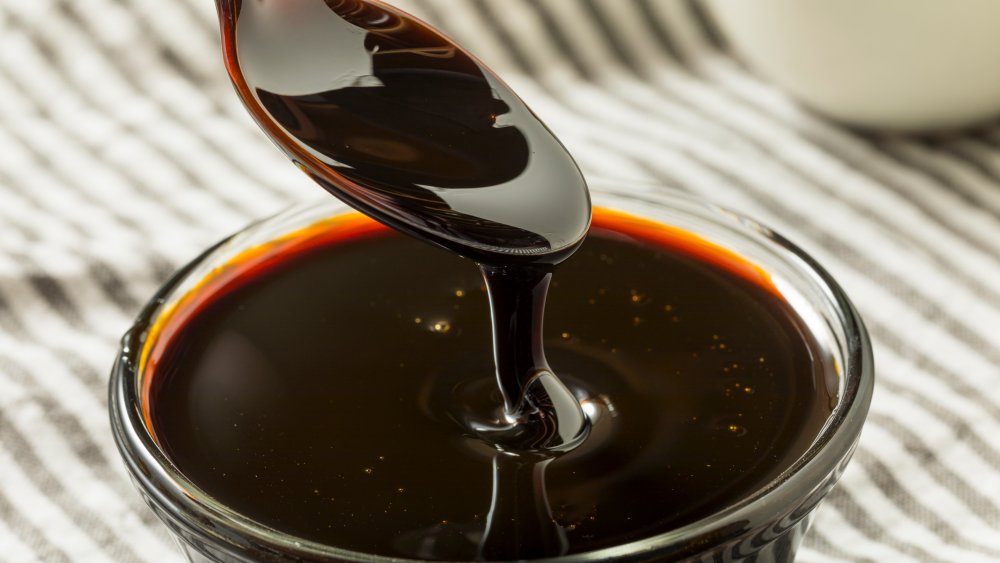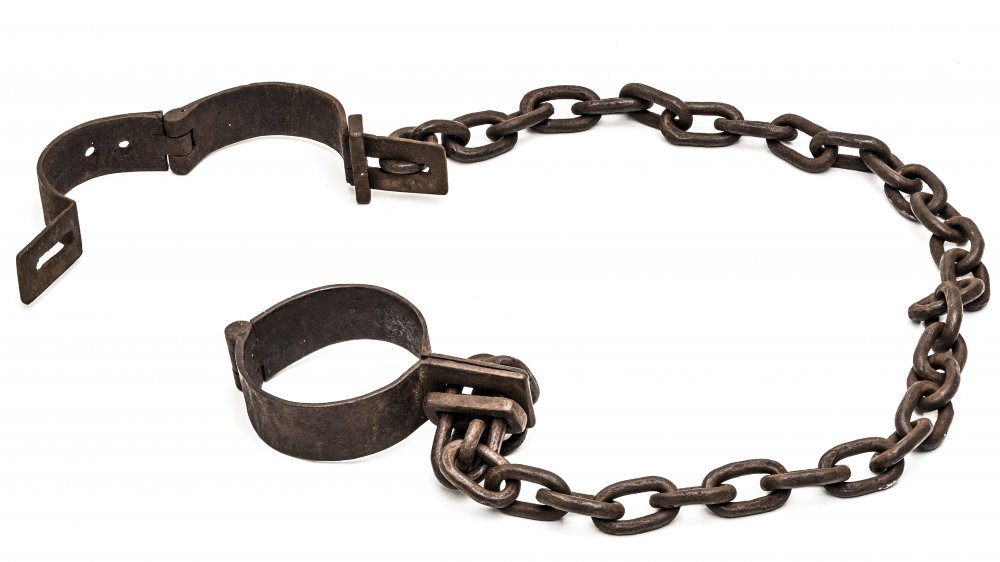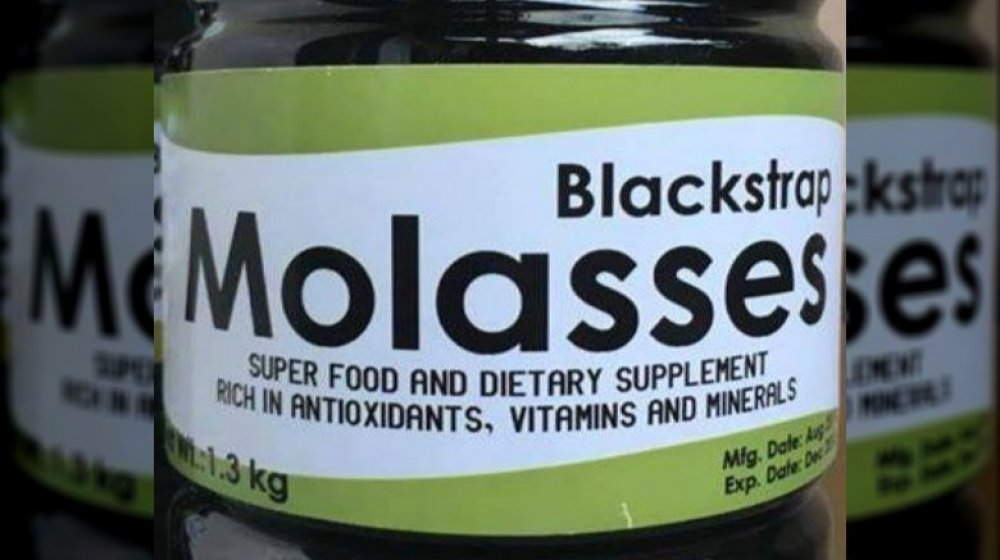The Untold Truth Of Molasses
Molasses, or treacle as it's known in the UK, is a sweetener perhaps best known for its appearance in holiday gingerbread cookies. It also pops up in recipes for barbecue sauce and marinades and Taste of Home notes that it can be used as a substitute for honey or maple syrup. So what, exactly, is molasses? How Products are Made tells us it's a byproduct of sugar refining. Molasses is the thick, dark liquid that's left after refined sugar has been crystallized from sugar cane or sugar beet juice, which is a process that may date back some 2500 years.
Besides its role in the kitchen, molasses is also used in the manufacture of animal feed and distilled into rum. It has also, in times gone by, been put to a few more off-the-wall uses: the 1893 classic A Manual on Lime and Cement speaks of its use as a component of the latter material, while the 1918 Annual Report of the Director of the National Bureau of Standards reveals that early 20th century printer's rollers were often made with molasses. Who knew? Well, as it turns out, there are quite a few surprising things about this sweet, sticky substance.
The dark history of molasses and the slave trade
Molasses played a large role in what may be the greatest tragedy in world history, that of the perpetuation of human slavery. It was actually one of the three sides of the triangle trade that ThoughtCo explains as follows: New Englanders manufactured rum and shipped it to the west coast of Africa, where it was exchanged for slaves. The slaves were then taken on the ill-famed "Middle Passage" to the Caribbean, where they were sold for money and molasses. The molasses was then sent back to New England, where it was used to make rum and start the contemptible cycle all over again.
So yes, in the shameful story of colonial-era history, it's not only the southern states that are to blame. The Virginia colony imported the first slaves put to work on US soil, but it was Massachusetts and Rhode Island that turned so much innocent molasses into the "demon rum" that financed the most appalling economy known to humankind.
Molasses once killed a bunch of people
A lot of foods have their unexpected deadly side – the otherwise innocuous romaine lettuce has been involved in a number of cases of food poisoning, and just a few years ago tainted cantaloupe may have killed more than 40 people. While molasses hasn't been linked to too many major foodborne illness outbreaks, it did, however, kill 21 Bostonians and injure 150 more in a terrible accident that took place in 1919.
This "Great Molasses Flood," as history remembers it, occurred when an enormous steel tank of molasses burst, releasing a 30 foot high tidal wave consisting of 2.3 million gallons of sweet, sticky death through the streets of Boston's North End. Oh, and you know that old cliché "slow as molasses?" Didn't apply. This marauding molasses was moving at speeds up to 35 miles per hour, so anyone unfortunate enough to be in its path could not outrun the brown monster. While this horrific industrial accident had a devastating impact on the community, it did wind up doing some good in the long run. As NPR notes, the lawsuit filed by survivors paved the way for future class action suits, and also set a precedent in that it was the first such case to make extensive use of expert witness testimony.
Blackstrap molasses isn't true molasses
While molasses taketh away, molasses also giveth, or so all of the reports touting it as a superfood would have all of us believe. Healthline lists such benefits as preventing diseases like anemia, asthma, and osteoporosis, easing muscle cramps, and lowering blood pressure. The catch? These properties are all associated with blackstrap molasses, which isn't the kind we typically use in cooking.
According to Punch Drink, blackstrap molasses is what results when regular molasses is boiled down and super-concentrated, This results in bitter, salty sludge that only has a 45 percent sugar content, as opposed to the 70 percent sugar level found in both light and dark varieties of baking molasses. Spoon University warns against using blackstrap molasses as substitute for true molasses in any recipe calling for the latter due to the fact that its bitter flavor will overpower the taste of whatever you're making.
Molasses can help your hair and skin
If you've bought blackstrap molasses by mistake and you find you can't choke the stuff down, don't worry, you can still put it to good use without its ever needing to pass your lips. Bustle lists a number of ways by which external application of molasses can benefit your body, and it seems as if either standard or blackstrap molasses can be used for these DIY beauty preparations. Molasses diluted with warm water can be used as a hair-defrizzer or mixed with coconut milk for a nourishing hair mask, and Taste of Home even indicates it might help to combat grey hair and hair loss. You'll need to be sure to rinse the diluted molassed out thoroughly after about 10 or 15 minutes once it's worked its magic, but it shouldn't leave your hair stiff or sticky once you do.
Diluted molasses can also be used as a face wash. This may possibly help with acne, eczema, and rosacea – in fact, Bustle reports that a molasses/turmeric face scrub works quite well to combat breakouts. and it can also help your skin feel softer and smoother (and again, not at all sticky).




